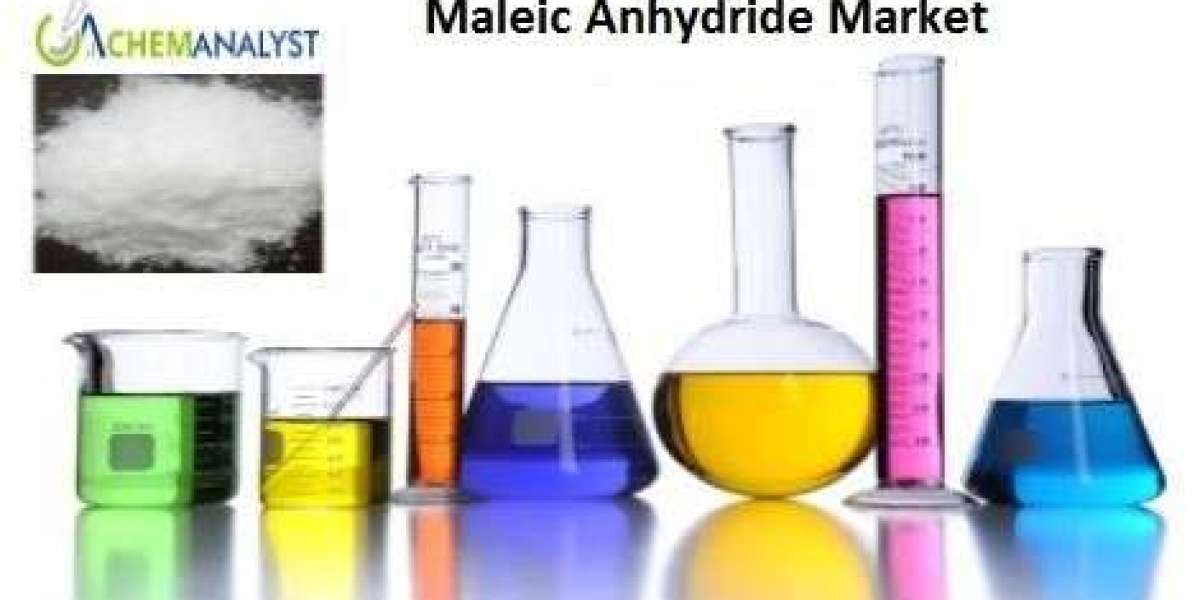According to the ChemAnalyst report, “The global Maleic Anhydride Market has grown remarkably to reach approximately 2300 thousand tonnes in 2022 and is anticipated to grow at a CAGR of 4.76% during the forecast period until 2032.”
>> ? ????? ???? ?? ???? ???? ??????: https://www.chemanalyst.com/industry-report/maleic-anhydride-market-654
The Maleic Anhydride market stands as a vital segment within the global chemical industry, playing a crucial role in various applications across diverse sectors. Maleic Anhydride, a colorless, crystalline compound, is produced through the oxidation of benzene or butane. Its versatile chemical properties make it an integral component in the manufacturing processes of resins, polymers, and other specialty chemicals. Understanding the nuances of the Maleic Anhydride market is essential for industry stakeholders, as it is intricately linked to the dynamics of sectors such as agriculture, construction, automotive, and more.
One of the key drivers of the Maleic Anhydride market is its extensive use in the production of unsaturated polyester resins. These resins find widespread applications in the manufacturing of fiberglass-reinforced plastics, laminates, and coatings. The demand for unsaturated polyester resins is closely tied to the growth of the construction and automotive industries, where these materials are employed for their high strength, corrosion resistance, and versatility. As these industries expand globally, the Maleic Anhydride market experiences a concurrent rise in demand.
Furthermore, Maleic Anhydride plays a vital role in the synthesis of 1,4-butanediol (BDO), a key intermediate in the production of various polymers and plastics. BDO is utilized in the manufacturing of polybutylene terephthalate (PBT), tetrahydrofuran (THF), and polyurethane, all of which have diverse applications in industries ranging from textiles to automotive components. The growth of these downstream industries contributes significantly to the overall demand for Maleic Anhydride.
The agricultural sector is another major consumer of Maleic Anhydride, particularly in the form of maleic hydrazide, a derivative used as a plant growth regulator and herbicide. Maleic hydrazide aids in the prevention of sprouting in potatoes during storage and controls the growth of undesirable plants. As global agriculture continues to modernize and adopt advanced technologies, the demand for Maleic Anhydride in this sector is expected to witness sustained growth.
Moreover, the market for Maleic Anhydride is influenced by the ongoing trends in sustainable and bio-based chemicals. As environmental concerns and regulations gain prominence, there is a growing emphasis on developing eco-friendly alternatives in the chemical industry. Maleic Anhydride manufacturers are exploring greener production processes and bio-based feedstocks, aligning with the industry's commitment to sustainability. This shift towards environmentally friendly practices is likely to impact the market dynamics, creating opportunities for innovative and eco-conscious players.
Geographically, the Maleic Anhydride market exhibits a global presence with key production hubs and consumption centers distributed across regions. Asia-Pacific, driven by the industrial growth in countries like China and India, holds a significant share in the market. The expansion of construction, automotive, and manufacturing activities in the region contributes substantially to the demand for Maleic Anhydride. North America and Europe also play crucial roles in the market, with established industries and a focus on technological advancements and sustainability.
Despite the positive outlook, the Maleic Anhydride market faces certain challenges, including volatility in raw material prices and the impact of global economic uncertainties. The production of Maleic Anhydride relies on feedstocks such as n-butane, benzene, or butane, and any fluctuations in the prices of these raw materials directly influence the overall production cost. Additionally, economic downturns and geopolitical factors can affect the demand for downstream products, consequently impacting the market for Maleic Anhydride.
>> ? ????? ???? ?? ???? ???? ??????: https://www.chemanalyst.com/industry-report/maleic-anhydride-market-654
The Maleic Anhydride market is an integral component of the global chemical industry, with its applications spanning across various sectors. The interplay of factors such as the demand for unsaturated polyester resins, growth in downstream industries like construction and automotive, agricultural applications, and the drive towards sustainability collectively shape the market dynamics. Industry participants must navigate these complexities, adapt to evolving trends, and explore innovative solutions to maintain a competitive edge in the dynamic and ever-changing landscape of the Maleic Anhydride market.


